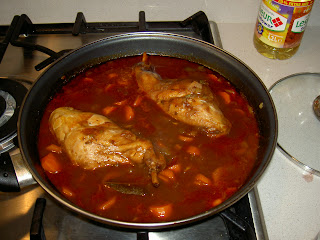
On your way to Marsascala, via the old route, there is a country lane on the right hand side that takes you to an area known as Bidni. In a completely rural setting, with crickets and sparrows providing background music you can visit the 18th century chapel of Our Lady of the Light as I did two weeks ago.
This chapel was built in the second half of the 18th Century and replaced another chapel which was dedicated to St John the Baptist. Unfortunately, this chapel was closed by the bishop for lack of decent upkeep. At that time the Maltese were still very wary of building on the coast and many chapels were neglected. The new chapel was dedicated to Our Lady of Light and it immediately attracted popular devotion. Meanwhile, people from all over Malta flocked here to pay her their homage.
The most interesting things found in this chapel are the 23 "ex voto" paintings kept in the vestry. These are small pictures made as fulfillment of vows to Our Lady of Light, mostly for assistance given to mariners in storms or in naval battles with the Turks. These paintings are fine specimens of popular art. They should be valued for the evidence they give of the devotion of the Maltese fishermen and the Knights towards the Madonna.
In each painting you see the letters V.F.G.A. (Voto Fatto, Grazia Acquisita -I received the grace after I had made the vow). Most of these small paintings belong to the 18th Century, with the oldest dating back to the year 1727. There are also relics from galleys, as fragments of rigging, likewise offered as fulfillment of some vow. This custom of offering Ex Voto paintings continued well in the 20th Century.
The main painting shows Our Lady holding the Child Jesus and helping save a Purgatory soul. Two other saints, John the Baptist, who reminds us of the previous chapel, and St Francis of Paola, a popular saint at the time, are also seen in this picture. On top of this painting there's a short Latin inscription, "Profer Lumen Caecis" (Give Sight to the Blind), a brief prayer to the Madonna, and beneath the painting "Mater Sanctissima Luminis" (Most Holy Mother of Light. "Tad-Dawl" is the Maltese for "of light").
Another writing on the door says that Rev. Lawrence Degabriele, Archpriest of Zejtun, repaired the chapel after the terrible storm of March 9, 1908, had inflicted great damage on it. It is said that this chapel remained under the administration of the Zejtun clergy because it was a priest from Zejtun than managed to give the last rites to a person dying at Bidni. Certain objects in nearby buildings are worth noticing, as a sundial and the stone loops for the erection of flagpoles on the 8th September, the day when the feast was held.
Pinned to the door of the chapel was a note advising the faithful when the next mass would be held. It added a human touch – and it was good to know that the chapel is still in use.



































